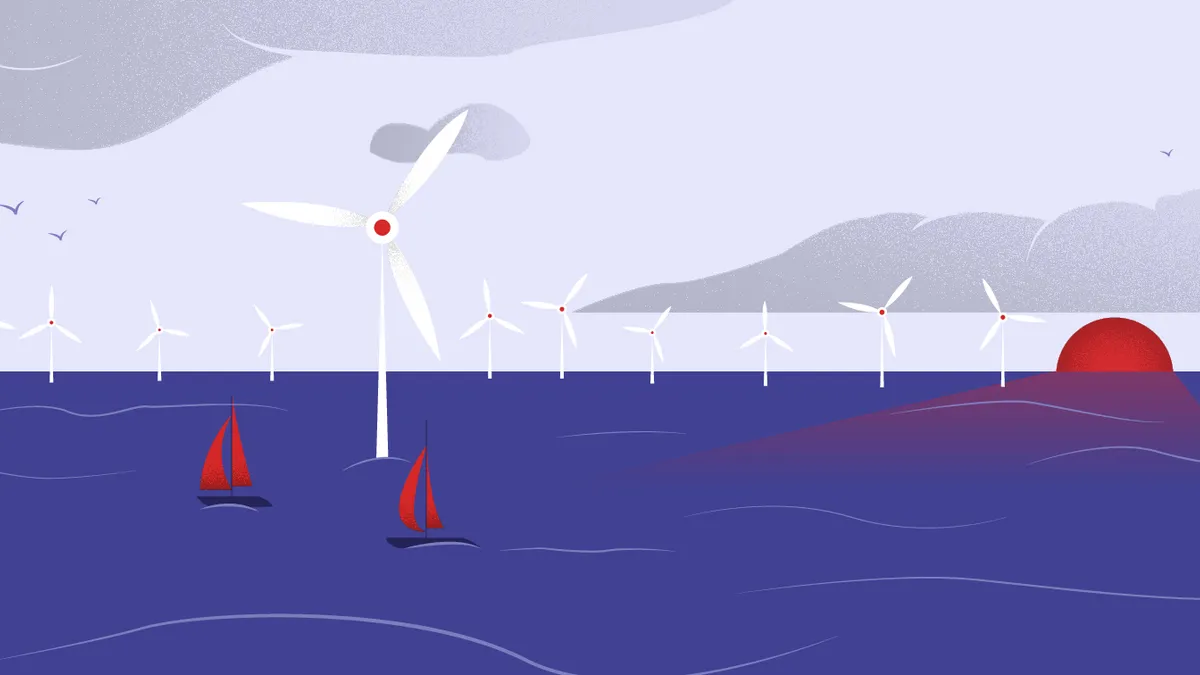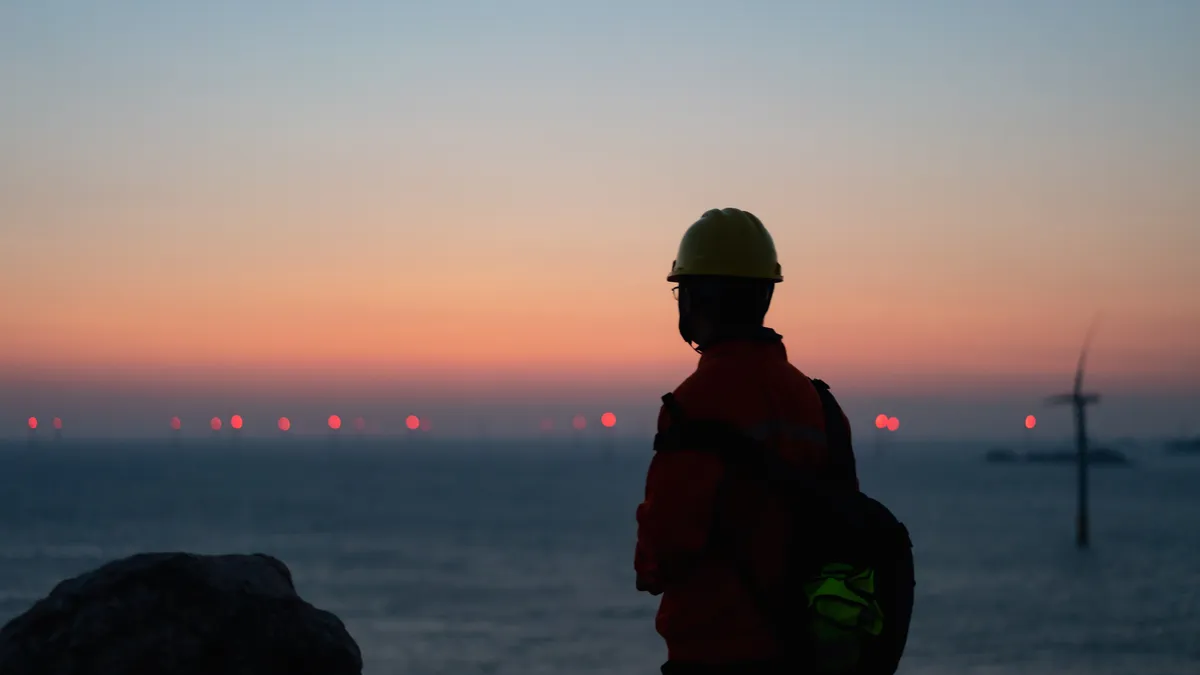The following is a contributed article by Theresa Carroll, an associate attorney at Clean Law PC and a 2020 fellow with the Clean Energy Leadership Institute.
Imagine this: thousands of wind turbines situated in our Great Lakes, out of sight from treasured coastal vistas but close enough to be economically viable. Technology and site placement mitigate risk to birds, and turbine masts hold strong against ice shoves, storms and waves. The vast clean energy potential offered by winds blowing across the Great Lakes is unlocked for millions of energy customers in the Midwest.
If it sounds too good to be true, it is — at least for now. The first demonstration wind installation to be constructed in the Great Lakes was recently dealt a potentially fatal blow, leaving the future of Great Lakes offshore wind hanging in the balance.
Project Icebreaker Wind: A clean energy solution beset by birds
Project Icebreaker Wind (Icebreaker), which is being developed by Lake Erie Energy Development Corporation (LEEDCo), will consist of six 3.45 MW turbines located eight miles north of Cleveland in the waters of Lake Erie. If built, Icebreaker would generate enough electricity to power 7,500 Ohio homes but, more significantly, would demonstrate that offshore wind in the Great Lakes is viable from both an economic and engineering standpoint.
There is pain in going first. Icebreaker has undergone more than a decade of site development, public engagement and government review, and has raised opposition regarding the project's potential to impact birds flying along a migratory route which crosses Lake Erie. Some birding groups fear that if Icebreaker is successful, larger utility-scale offshore wind will follow in its footsteps, resulting in a much larger ecological impact than Icebreaker poses alone.
The Ohio Power Siting Board (OPSB) — the last of more than a dozen agencies whose approval Icebreaker required — recently issued an opinion approving the project's construction, but with an unexpected restriction. The opinion included several conditions designed to mitigate risk to migratory birds, most of which were previously negotiated and agreed upon — except one.
In a surprise move, OPSB added a condition requiring the project's six turbines to stop spinning (known as "feathering") from dusk to dawn from March 1 to Nov. 1, until more data can be collected regarding the project's impact, if any, on nocturnal migratory birds.
OPSB should remove the feathering condition from Icebreaker's construction permit
The feathering condition flies in the face of the OPSB's own findings throughout its years-long permitting review process.
In its final opinion, OPSB not only acknowledged that it had sufficient evidence to determine the project's impact on nocturnal migratory birds, but concluded that "most birds, when migrating south in the fall and north in the spring, will fly above the rotorswept zone of the turbines." OPSB also noted that Icebreaker's offshore location would result in minimal overall impact to avian species, particularly when compared to installed onshore wind projects in the Great Lakes region.
Despite this, OPSB ultimately surrendered to a fear of the unknown, adding the eleventh-hour feathering condition because the ability to monitor birds near the turbines "relies on technology and data that is, to an extent, unknown." In other words, OPSB has put Icebreaker in a classic Catch 22: OPSB, not being satisfied with Icebreaker's bird monitoring and safety measures, has likely made the project economically unworkable, such that the needed data on migratory birds will never be collected.
Whether the feathering condition will doom the project remains to be seen. LEEDCo has appealed OPSB's decision, and Ohio lawmakers are pressuring OPSB to reconsider. While LEEDCo president David Karpinski has expressed heavy disappointment with the feathering condition, he has not definitively stated that Icebreaker cannot be constructed with the condition in place.
Icebreaker and large-scale offshore wind projects will provide a net benefit to bird populations
Icebreaker's potential risk to bird populations is a terrible reason to hinder the project's construction. The benefits of offshore wind far outweigh the potential harm posed to migratory birds.
Icebreaker's success (and that of future utility-scale offshore projects) will protect birds by reducing reliance on fossil fuels, resulting in saved habitat and slowed climate change. Moreover, data shows that wind turbines are not a major source of avian death: wind turbines cause a fraction of the bird fatalities caused by cats, buildings, cars and powerlines. The fossil fuel industry kills more birds than wind turbines, too: a 2014 US News and World Report analysis showed that oil, natural gas, and coal production result in far more bird fatalities than even high-range estimates for wind, when taking climate change impacts into account.
Climate change's anticipated impact on birds is no small issue. The Audubon Society has found that two-thirds of North American bird species will be threatened with extinction by climate change.
Audubon's Clean Energy Initiative supports properly sited wind power as an important part of the strategy to combat climate change, stating that "in order to help prevent species extinctions and other catastrophic effects of climate change, pollution from fossil fuels must be reduced as quickly as possible," including "rapidly expanding energy efficiency, renewable energy and alternative fuels."
Further, Icebreaker offers Ohio — a state with a mediocre climate track record and high fossil fuel production — the opportunity to become a national leader in renewable energy. According to the U.S. Energy Information Administration, approximately 74% of Ohio's energy production came from coal and natural gas in 2019, with only 1.8% coming from wind. Indeed, Ohio ranks 38th among states for renewable energy production.
There has been some movement toward improving these metrics: for example, in 2018 Cleveland became the first Ohio municipality to commit to a goal of meeting 100% of electricity demand with renewable energy by 2050. Ohio's energy industry is better known, however, for coal bailouts and corruption than investment in innovative clean energy solutions. Projects like Icebreaker would help meet Cleveland's goal, clean up Ohio's image and serve as a critical proof of concept for utility-scale offshore wind generation in the Great Lakes.
Bird lovers and wind developers should have the same goal of clean energy and climate mitigation. OPSB should allow Icebreaker to move forward, and not allow bird protection to become distracting scapegoat.
Editor's Note: This editorial has been corrected to accurately reflect the views of the Audubon Society.





















